I recently wrote a story for The New York Times Magazine about Michelangelo’s David: its beauty, its flaws, its checkered history, its possibly precarious future. (The statue’s ankles are cracked, which raises serious concerns about stability, especially in the event of a major earthquake.) Much of the reporting was done during a week I spent in Florence in June 2015, during which time The Florentine supplied me with all kinds of help: contacts, logistical support, and—crucially—interpreters. (My Italian comes mainly from listening to CDs in the car, which means I am fluent only at accepting or rejecting appointments to drink wine.)
Although the published article was relatively long, it still excluded many of my favorite Florentine conversations. My interpreters and I wandered central Florence like anthropologists, speaking with strangers, trying to get a sense of how the crowds relate to the city and how the city relates to the crowds. We interviewed Carabinieri, shopkeepers, museum guards, museum directors, and visitors from all over the world. These interactions thickened my knowledge of the city in a way that my more casual visits to Florence never could.
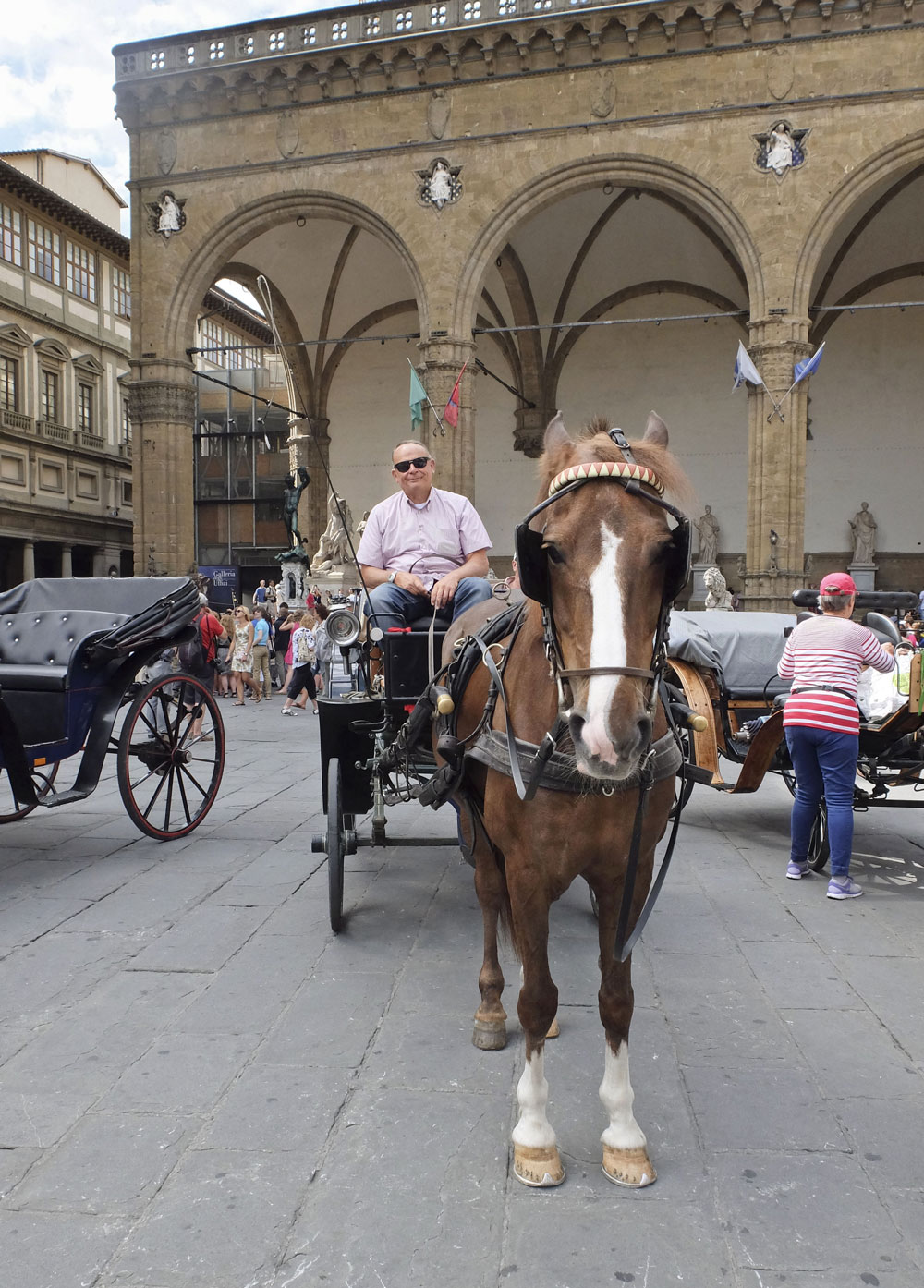
Paolo the horse driver with Don Lurio in piazza della Signoria | Photo Alexandra Korey
In piazza della Signoria, Alexandra Korey and I spoke for a long time with a horse carriage driver named Paolo. We found him surveying the square through Prada sunglasses, waiting for a customer, elbow on knee. The horse’s name, Paolo told us, was Don Lurio. The two of them had been giving carriage rides around Florence together for 16 years.
“What kinds of things have you seen in the piazza?” we asked Paolo.
“Everything happens here,” he said. Tourists climb on the statues; they get into fights. At some point, as he spoke, I got distracted because the carriage driver next to him started feeding her horse a banana—a food/animal combination I had never even considered possible. It seemed that everything really did happen in piazza della Signoria.
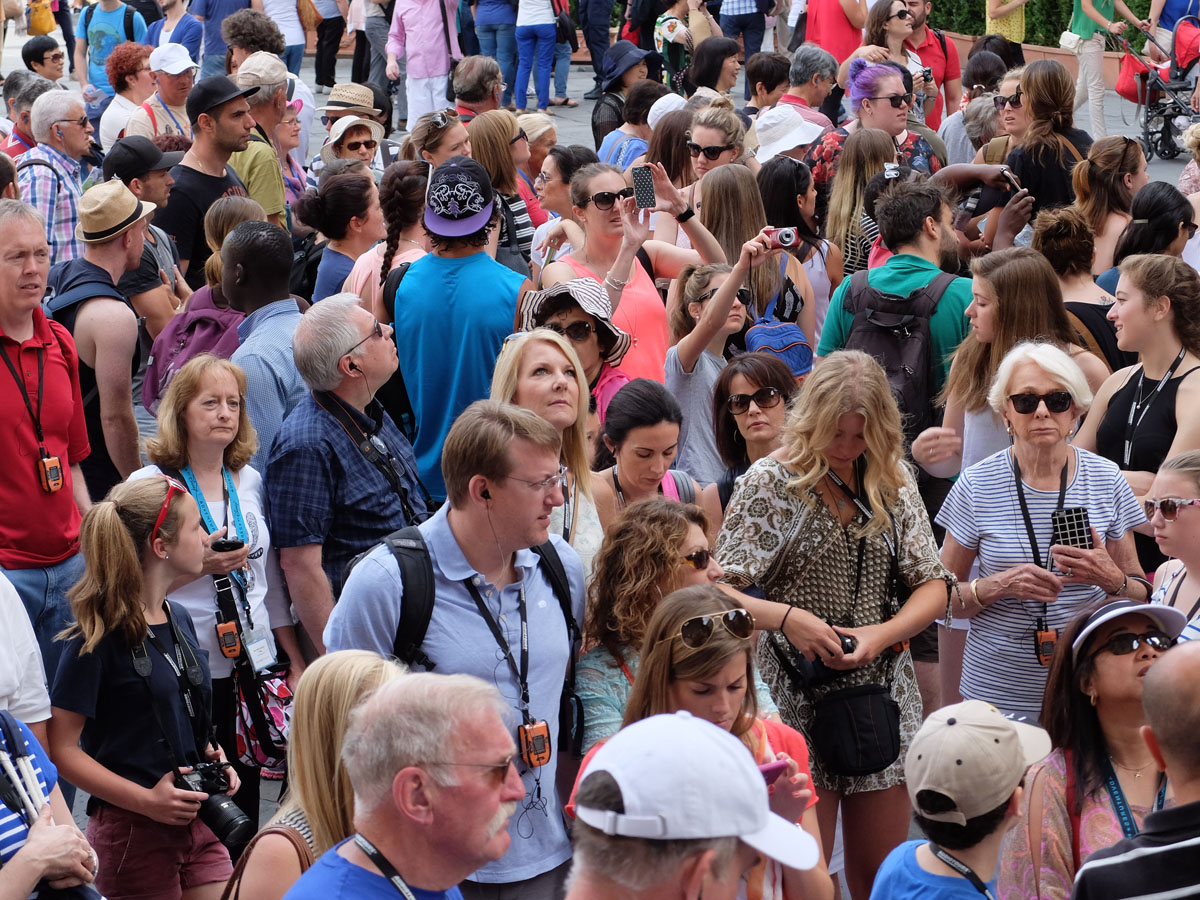
Mid-morning crowds in piazza della Signoria | photo Alexandra Korey
After a while Paolo started complaining to us, as many people did, about the decline of tourism in Florence. Not a decline in the numbers—the numbers were as high as ever—but a decline in standards. Ten years ago, Paolo said, there was quality tourism. Visitors would stay in Florence for three or four days, long enough to get to know the place. But this tradition has recently been replaced, he said, by fast tourism. Today’s visitors travel in huge groups that overwhelm the piazzas and museums for a few hours before they leave to overwhelm the next famous city for a few hours. There is no meaningful connection to the tourists and the place. To make things worse, Paolo said, the presence of fast tourists attracts hawkers and thieves, which drives away quality tourists. In the good old days, he said, tourists would take the time to go to the Accademia to see the original David. Today’s tourists, he told us, don’t even realize that the David standing in piazza della Signoria is not the real thing—in their minds, it’s the original. Paolo even wondered if these tourists recognized the David at all. He said that many of these mass tour groups were from Asian countries, and that most of them were less interested in taking pictures of the David than they were in taking pictures of his horse.
Indeed, right after he said that, two Asian tourists came up and took a picture posing with Don Lurio.
I couldn’t tell if Paolo’s observations were based in reality or if they were just the typical declinist fantasies of an aging man in a changing world. Ten years ago, in the midst of all this so-called quality tourism, was anyone really singing the praises of Florence’s gloriously sophisticated tourists? Haven’t tourists always been looked at as one level above the pigeons? The relationship goes back at least to the Middle Ages, when religious pilgrims would descend on Florence every spring, attracting thieves and swindlers, driving the wealthier residents to the country. In The Stones of Florence (1956), Mary McCarthy referred disdainfully to “mass tourism — the universal deluge.” In The Italians (1964), Luigi Barzini complained that Italian cities in the summer “are almost completely taken over by the swarms of dusty and perspiring foreigners.” So the phenomenon was perhaps not entirely new.
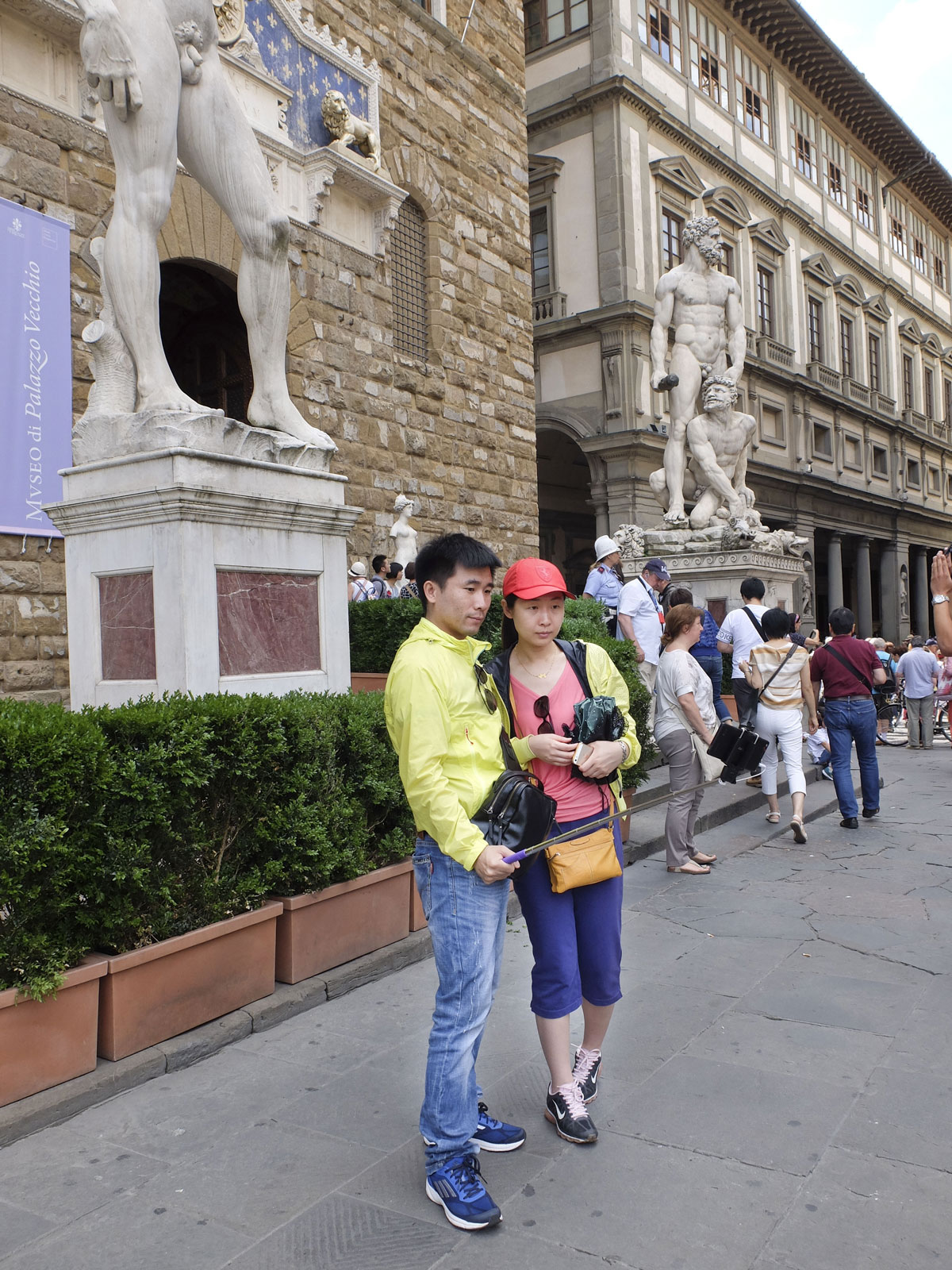
Asian tourists with a selfie stick | Photo Alexandra Korey
After speaking with Paolo, Alexandra and I watched some of these huge tour groups. We watched a young Chinese couple using a selfie stick underneath the fake David. I approached and asked, in English, if they knew what they were taking a picture of. The man looked at me like I was possibly the dumbest person he had ever seen.
“David,” he said.
We spoke with a Carabiniere posted out in front of the Loggia dei Lanzi. His name was Rafael. He said he grew up in the countryside outside of Florence. Twelve years ago, on his first day patrolling the piazza, he had been shocked by its beauty. Now, however, he was used to it. We asked him how many people come through the square every day. “Incalculable,” he said, and then he repeated the word several times. This immense flow was hard to control. People would climb the statues, write on the walls, break into occasional fights. His main interaction with the public, he said, was answering questions: every day, people came up and asked him if he would take pictures with them, where they should eat, directions to famous sites that aren’t even in Florence (the Bridge of Sighs, the Colosseum). He agreed with Paolo that tourism has changed in recent years; these huge groups now spend a single day in Venice, Florence, Rome. His favorite time of day is the early morning, before the crowds arrive, when the street cleaners come through and you can smell baking bread. Then the groups hit and everything goes crazy.
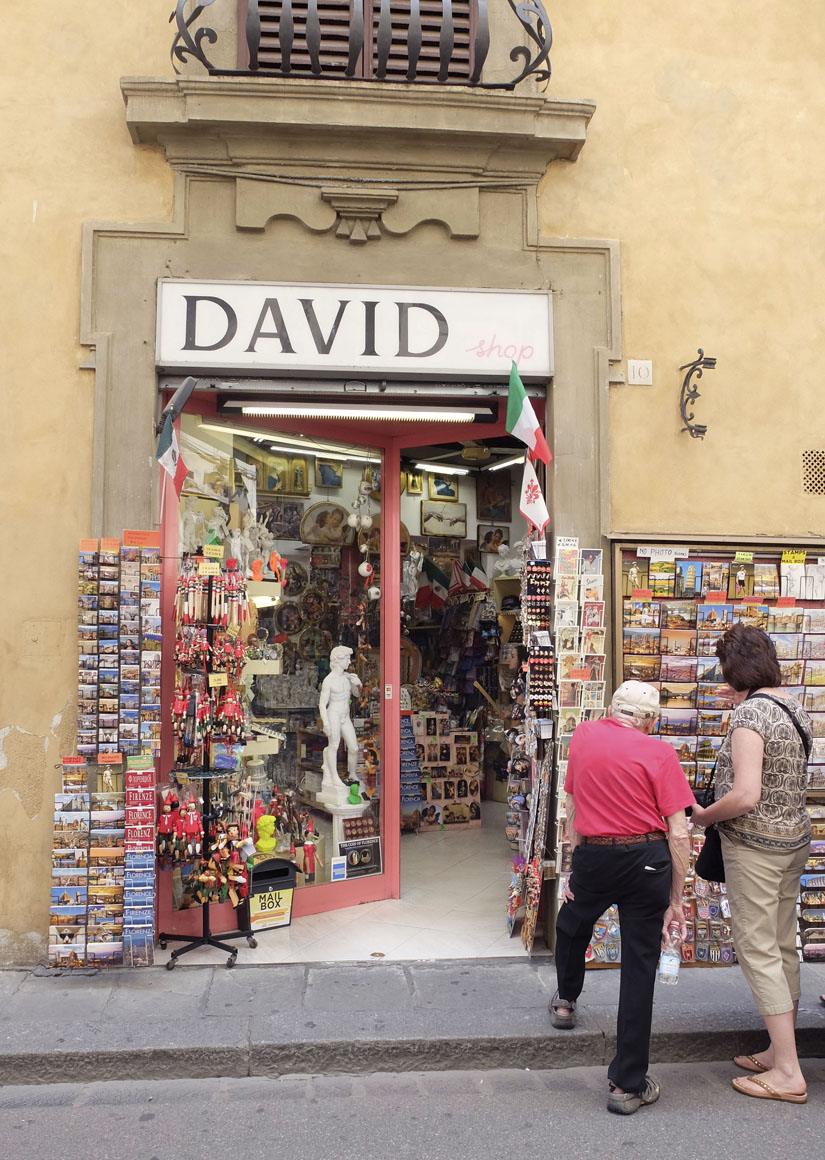
David Shop | Photo Alexandra Korey
A couple from Milan, in a souvenir store called David Shop, told us they had fled home for the weekend to avoid the crowds of the Milan Expo—but that this had clearly been a mistake, because they had never seen anything like the tourist crush in Florence.
We spoke with a shopkeeper whose window was full of David statuettes in electric colors: orange, pink, blue, green, gold—a tropical rainbow of neon Davids. He explained that tourists were always hungry for something different, and this was the season’s freshest style. These colorful statuettes, he told us, were made exclusively for his shop by a workshop right there in the center of Florence—handmade in the city, just like the original David itself. It only took a few blocks before we realized, inevitably, that the colorful statuettes were actually for sale all over the city. The exclusivity had been a fiction, as no doubt was the workshop in the city center. This kind of thing has been going on, no doubt, since the Middle Ages as well.
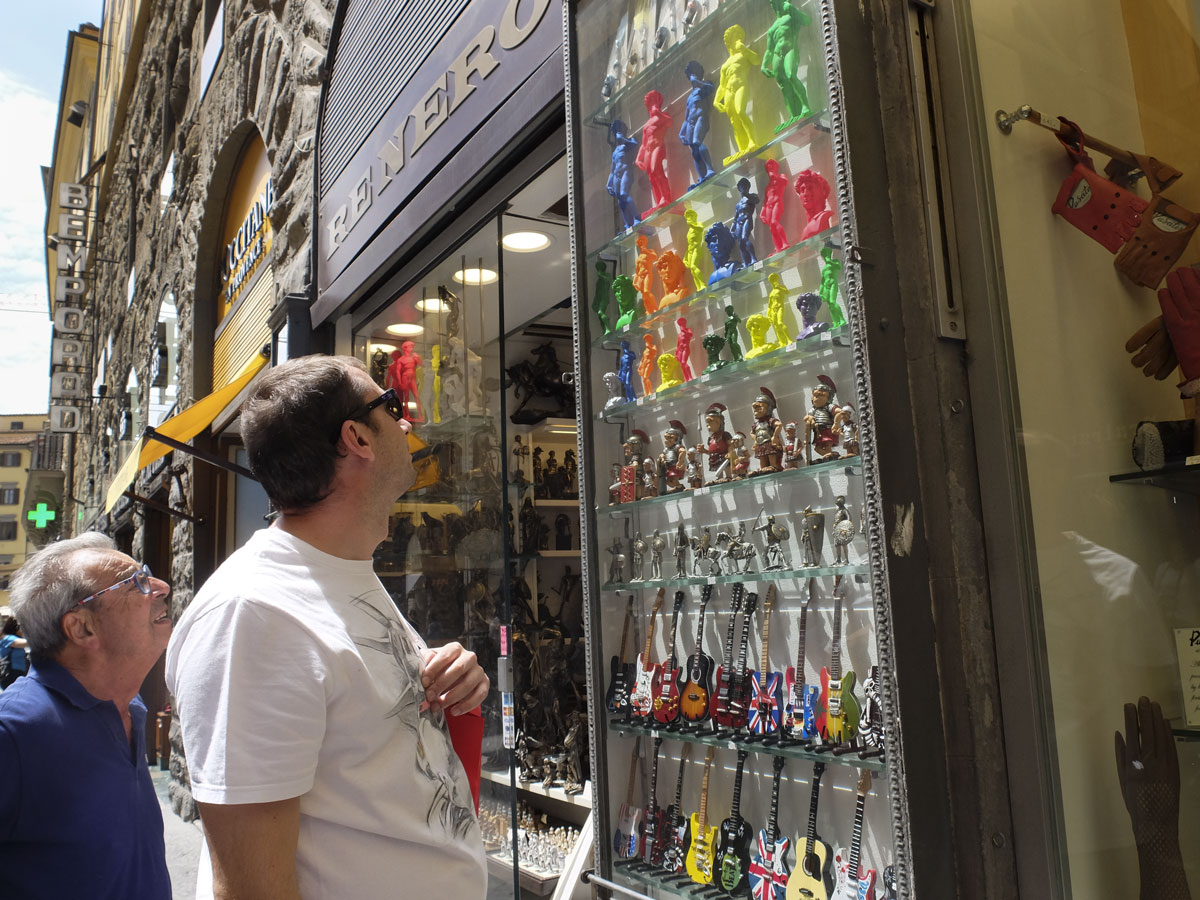
Shop with fluorescent Davids | Photo Alexandra Korey
At the Accademia, I met Franca Falletti, who served as Director of the museum for 21 years. (She retired in 2013.) She was small and stylish—dressed entirely in black, with long dangling silver earrings and a streak of red in the front of her hair. I asked Falletti what she felt, personally, for the David, after all those years as his official protector. Did she revere him? Did she loathe him?
In fact, she was hilariously blasé. She told me (through my interpreter, Helen Farrell, Editor-in-Chief of The Florentine) the David was wildly overrated, not even the most interesting Michelangelo statue in Florence. (She preferred the Bacchus, she said, in the Bargello.) The David’s presentation was too romanticized—he was meant to be seen out on the streets of Florence, not all alone, in a church-like rotunda, elevated on a pedestal, to be worshiped by pilgrims. This seemed, in that context, sacrilegious. We were talking next to the David itself, in the midst of this endless worshipful crowd of tourists—people who had paid thousands of dollars and traveled thousands of miles to come stand next to the most famous statue in the world.
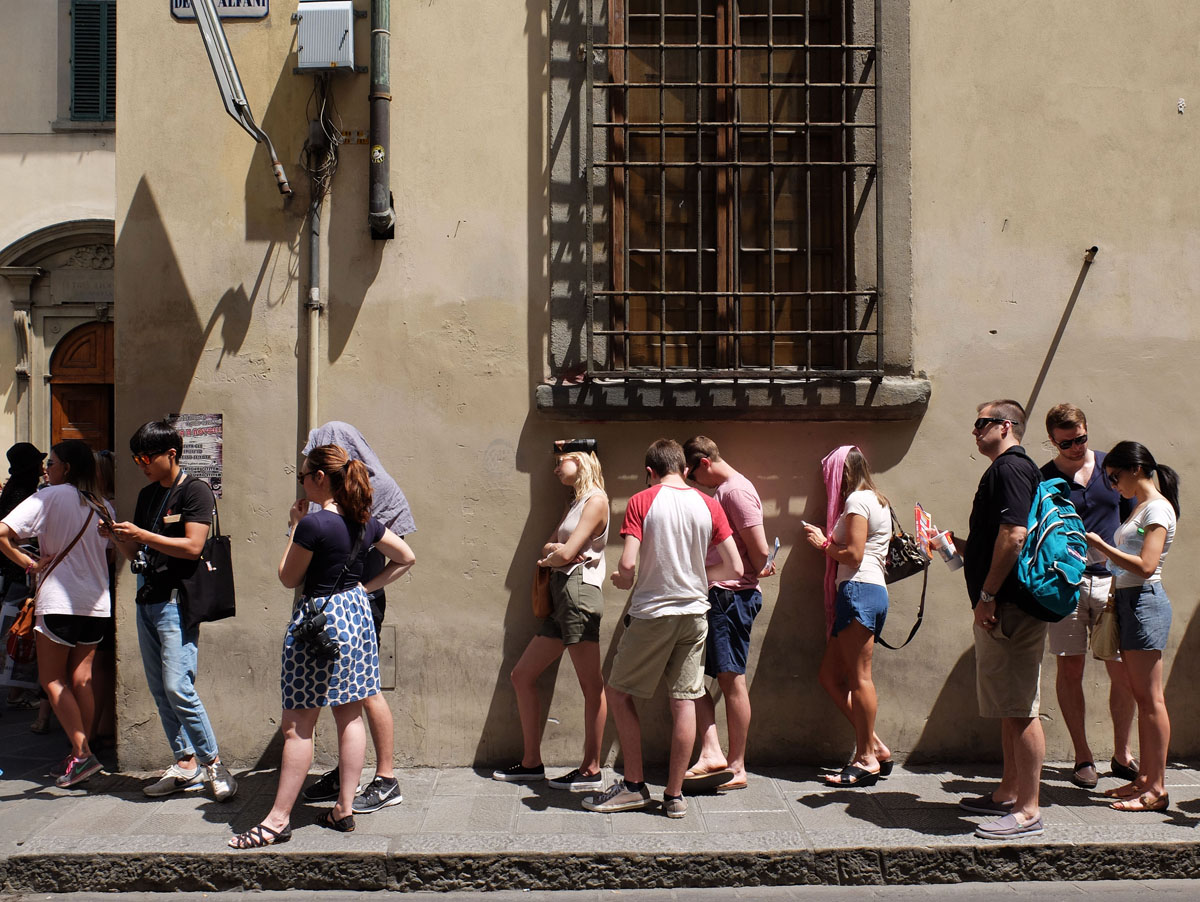
Travelers waiting in line at the Accademia in summer | Photo Alexandra Korey
So what were we all doing here, I asked Falletti, if the David wasn’t even all that great?
Here Falletti said something profound. When we look at the David, she said, we might think we are looking at something perfect. That’s what we’ve been taught to see. On some level, however, we feel that he is imperfect. We sense, intuitively, all of his flaws: the badly chosen marble, the funky proportions, the scars from his various injuries. In that gap between perfection and imperfection, she said, there is room for actual humanity. This is what captivates the modern viewer: this tension between the ideal we came to see and the reality we found instead.
It struck me, afterwards, that the same could be said of Florence itself.





